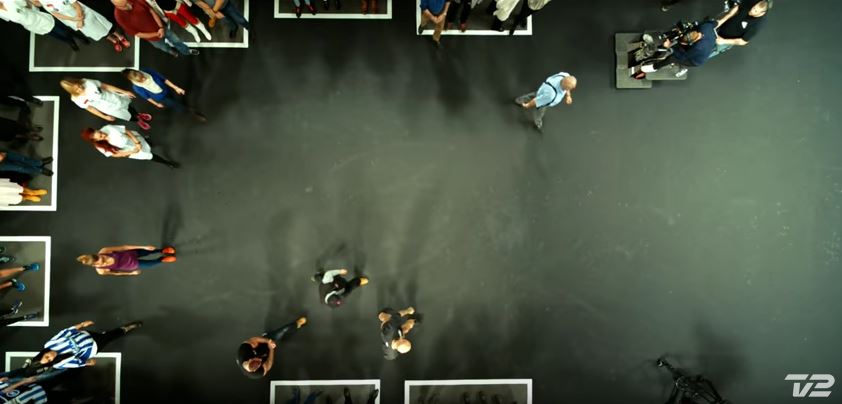
Have you caught the video that’s making the rounds online these days (it was posted on youtube on January 27, 2017, and it’s already got over two million hits) : the ad for a Danish broadcaster, in which they ask:
What happens when we “unbox” each other?
Not seen it?
Well then this is your lucky day.
Yes, there’s an “it’s a small small world” tone to the ad — and, yes, we can’t forget that, at the end of the day, this is actually an ad for a TV station, keen to increase advertising revenues by bringing in more viewers, in a competitive advertising market; but I don’t want to be quite that cynical in approaching it. Instead, I just want to say that the way it’s framed strikes me as interesting; do you notice, for example, that when the people re-group, in light of the novel questions, they don’t stand within a lined space?
They’re unboxed, I guess — as the video phrases it.
But, if you think about it, they’re no more classified when grouped as high-earners or rural folks than when they’re rearranged in terms of those who were class clowns or those who feel lonely.
Sure, the boxes are different, the original group’s members are rearranged, but they’re still boxed, even if where they’re standing has no white lines on the ground.
After all, they know where to walk, and then stand, in response to each new question.
The point, then, is a simple one but, perhaps due to its simplicity, one that’s easily overlooked: there’s nothing more or less authoritative about the re-groupings — for many of us they’re counterintuitive, to be sure, as compared to how we seem to naturally sort and rank ourselves (thereby nicely demonstrating that there’s nothing natural about any human groupings, aka: it could be different and, thanks to this commercial, we see it in practice). But the questions that prompt the people to move are no less interested and vested.
(Don’t you assume it took the production team some time to narrow things down to just this list?)
It’s just that the interests that drive them are different.
A difference of consequence to some or many of us, no doubt.
The commercial, of course, wouldn’t have the same effect if we just asked people to repackage themselves in new ways. No, to authorize the difference we need to create a sense that there are ways of organizing that fall outside interests, that are, simply put, unboxed — if only we could just peel away the inessential, and shake off the limiting structures that we place upon ourselves.
If only we could break free, color outside the lines.
But there’s no white lines where they stand. The production team was astute to figure that one out.
Don’t get me wrong — I find it a pretty effective commercial. But it’s effect has much to do with the absence of lines on the ground when the questions inevitably presuppose them. If no one else, then at least the film crew needs them — otherwise how do they know the focal depth of the shot?
And, come to think of it, not everyone answers each question together, uniformly; so though a jovial bunch, who applaud the lone outsider, the us/them dynamic, by definition, never leaves that room.
It’s just how identification works.

